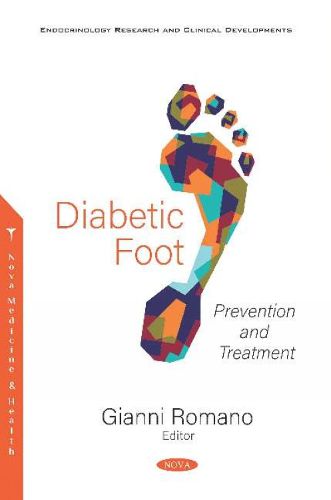Readings Newsletter
Become a Readings Member to make your shopping experience even easier.
Sign in or sign up for free!
You’re not far away from qualifying for FREE standard shipping within Australia
You’ve qualified for FREE standard shipping within Australia
The cart is loading…






This book first proposes a noninvasive screening method for diabetes based on the thermoregulation of the peroneal vessel. Since diabetes affects the proneal vessel of the patients significantly, the thermoregulatory behaviour of peroneal vessel is studied for induced hot and cold stress in this work. Next, the authors highlight recent findings in the area of human mesenchymal stem cells sources, their differentiation ability, immunogenicity, adaptation to the microenvironment, as well as use in human clinical trials. The authors also propose that, given the increasing prevalence of antibiotic resistant pathogens and the failure of antibiotic-exclusive therapeutics in the treatment of diabetic foot infections, combinations of antimicrobial peptides and antibiotics may be a potential treatment alternative. Advanced diabetic foot ulcer therapies are explored based on current research. Recent studies show that diabetic patients have a 25% risk of developing diabetic foot ulcers in their lifetime. Lastly, a study was carried out to investigate the effects of social support on the reduction of wound size after four weeks of treatment with standard care in patients with Grade B, Stage I diabetic foot ulcer.
$9.00 standard shipping within Australia
FREE standard shipping within Australia for orders over $100.00
Express & International shipping calculated at checkout
This book first proposes a noninvasive screening method for diabetes based on the thermoregulation of the peroneal vessel. Since diabetes affects the proneal vessel of the patients significantly, the thermoregulatory behaviour of peroneal vessel is studied for induced hot and cold stress in this work. Next, the authors highlight recent findings in the area of human mesenchymal stem cells sources, their differentiation ability, immunogenicity, adaptation to the microenvironment, as well as use in human clinical trials. The authors also propose that, given the increasing prevalence of antibiotic resistant pathogens and the failure of antibiotic-exclusive therapeutics in the treatment of diabetic foot infections, combinations of antimicrobial peptides and antibiotics may be a potential treatment alternative. Advanced diabetic foot ulcer therapies are explored based on current research. Recent studies show that diabetic patients have a 25% risk of developing diabetic foot ulcers in their lifetime. Lastly, a study was carried out to investigate the effects of social support on the reduction of wound size after four weeks of treatment with standard care in patients with Grade B, Stage I diabetic foot ulcer.